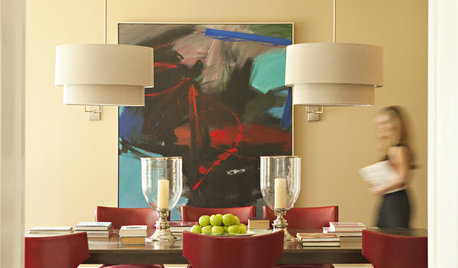Shelf life of bean seeds
anney
13 years ago
Related Stories

GARDENING GUIDESSeeds or Seedlings? How to Get Your Garden Started
Growing delicious herbs and vegetables starts with knowing your goals and when you want to plant
Full Story
DECORATING GUIDESBean There, Done That: Coffee Table Alternatives
Get creative with these ideas for salvaged and DIY pieces that will get people talking
Full Story
LANDSCAPE DESIGN10 Fun Features to Bring Your Landscape to Life
Give gnomes a home, create a magical portal or add another unexpected element to turn your garden into a destination
Full Story
LIFEImprove Your Love Life With a Romance-Ready Bedroom
Frank talk alert: Intimacy and your bedroom setup go hand in hand, says a clinical sexologist. Here's her advice for an alluring design
Full Story
INSPIRING GARDENSNative Plants Bring 10 Southern California Front-Yard Gardens to Life
Rare plants, rain gardens and wildlife habitats are just a few of the features showcased on the 2016 Theodore Payne Native Plant Garden Tour
Full Story
KITCHEN DESIGNPersonal Style: 50 Clever Real-Life Kitchen Design Details
Get ideas from savvy homeowners who have a knack for creating kitchens celebrating personal style
Full Story
NEUTRAL COLORSHow to Bring Beige Walls to Life
Go for sprightly instead of snoozy by pairing beige walls with higher-octane hues
Full Story
GARDENING GUIDES10 Easy Edibles for First-Time Gardeners
Focus on these beginner-friendly vegetables, herbs, beans and salad greens to start a home farm with little fuss
Full Story
KITCHEN DESIGN7 Steps to Pantry Perfection
Learn from one homeowner’s plan to reorganize her pantry for real life
Full Story
GARDENING FOR BUTTERFLIESA Quick-Start Guide to Bird-Watching for Fun and Learning
Set out some seed and grab your field guide. Bird-watching is an easy, entertaining and educational activity for the whole family
Full Story





jimster
anneyOriginal Author
Related Professionals
Ballwin Landscape Architects & Landscape Designers · South Elgin Landscape Architects & Landscape Designers · Westwood Landscape Contractors · Florham Park Landscape Contractors · Lantana Landscape Contractors · Midland Landscape Contractors · Norristown Landscape Contractors · Porterville Landscape Contractors · Shirley Landscape Contractors · White Bear Lake Landscape Contractors · Honolulu Decks, Patios & Outdoor Enclosures · Oswego Decks, Patios & Outdoor Enclosures · Paradise Valley Decks, Patios & Outdoor Enclosures · Randallstown Decks, Patios & Outdoor Enclosures · Pleasant Grove Decks, Patios & Outdoor Enclosuresfusion_power
anneyOriginal Author
farmerdilla
P POD
zeedman Zone 5 Wisconsin
anneyOriginal Author
aftermidnight Zone7b B.C. Canada
john_al
jimster
fusion_power
jimster
Macmex